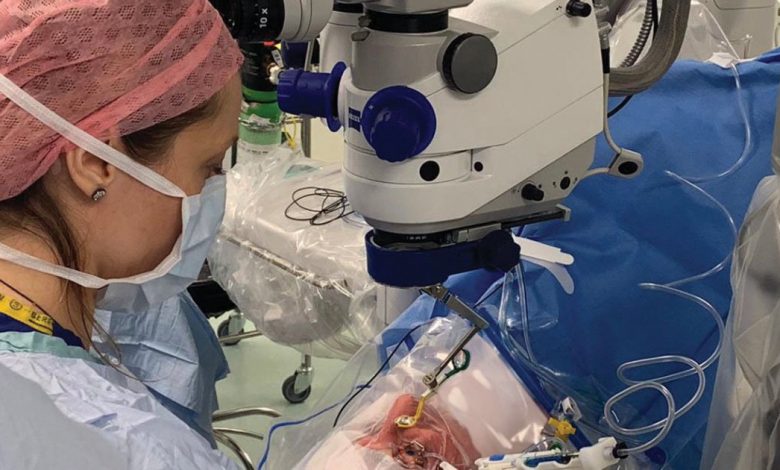
A restored 20/20 vision used to be a pipe dream for people with blurred vision. They could only experience clear vision by investing in a good pair of glasses.
Now, this isn’t the only case – thanks to advances in eye care technology.
Superior vision technology has changed the world of eye care, from the diagnosis and treatment to the tools and equipment, as well as the recovery process. Technology in eye care has witnessed amazing breakthroughs that are rapidly changing the future of people with chronic eye conditions.
From AI-powered eyeglasses that address macular degeneration to adaptive optics, technology is expanding your treatment options.
Here are some popular advances in eye care, as well as the benefits of technology’s touch in the world of vision.
What the Future of Eye Care Looks Like
Some possibilities for the future may sound like a science-fiction film or book. But groundbreaking technology continues to be developed, which includes improving the options for reducing vision loss. While no one can totally predict what the future has in store, there are a few clues about what may happen in the ophthalmology and optometry industries.
The clues lie in the following innovations:
Wearable Technology
More people are wearing smartwatches on their wrists, and new wearable technology fills the online catalogs of today’s stores. In fact, many people are searching for the best smart watches under 100 – and with good reason.
These tools offer more than just tracking vitals and reminding the wearer all day. The right wearable technology establishes a connection between doctors and patients, helping both parties with monitoring and health data management for the pursuit of better eye care.

Wearable technology can also be integrated into eyeglasses. In line with this pursuit, researchers are also working on developing smart contact lenses, which are high-tech lenses that treat eye injuries and congenital diseases. Apart from treating eye conditions, high-tech lenses are also being designed to treat allergies or protect the cornea from destruction (aka corneal melting).
Mobile Eye Health Technology
Patients who sit in the eye doctor’s chair are no strangers to the large equipment placed around the chair. All of this heavy-duty equipment is used to diagnose your eye condition. It’s helpful for patients who can drop by the office, but what about those who can’t visit the clinic?

Thanks to technology, ophthalmologists can package more use into smaller tools, which makes it easier to prevent eye diseases in other locations. Mobile eye health tech also enables doctors to treat patients at home or people in remote areas who do not have access to a clinic. Ophthalmologists can also schedule consultations online via video-conferencing platforms, which is helpful in today’s COVID-19 situation.
Robotic Surgery
Eye surgery has changed over the years. Recently, it made a big shift from the use of scalpels to sophisticated lasers. This advanced technology enables eye surgeons to be more precise with their procedures, reducing the recovery times, decreasing the risk of complications and improving the results of the surgery.

Robot-assisted surgical operations also improve a surgeon’s precision more. Precise techniques matter, especially for surgeons using hand-held instruments. Robot-assisted surgery reduces the risk of human error, which improves the accuracy of microsurgical system processes.
How New Technology is Improving Your Treatment
Shorter Treatment Procedures and Recovery Times
The adoption of advanced techniques and sophisticated equipment has led to better eye care results. Thanks to science, procedures have become shorter yet more precise and treatment times have been dramatically reduced.
Today, nearly all front-line treatment centers use laser technology, whether it’s for reshaping the cornea or measuring focus. Laser surgery is a minimally invasive and safe procedure that automates the most important processes in surgeries that require maximum accuracy. At the same time, patients experience minimal pain in a shorter span of time.
Treatment Options
Newer tools and techniques are getting closer to achieving pain-free treatments and better eye care services. At the same time, patients have more options than just surgery. In terms of eliminating blindness, technology offers the following options:
- Diode laser. Treats retinal tears and prevents retinal detachment.
- LASIK. Reshapes the cornea to improve the eye’s focus, as well as restores vision minus the pain.
- Wavefront analysis. Measures how the eye focuses on light. It also creates an eye map, which helps doctors make an accurate diagnosis.
Improvement in Visual Outcomes
Lens-based techniques have improved the prevention of eye impairments. These techniques can accurately track the fluctuations in eye pressure, as well as timely scheduling of therapeutic interventions. New formulations are also more effective and prompt than before.
The remarkable results of new technology have shifted the focus from eye treatment to the preservation of vision. Today, going under the knife isn’t the only option to correct your vision. Technology has expanded your treatment options.

